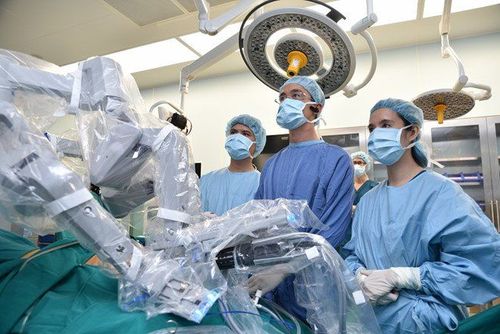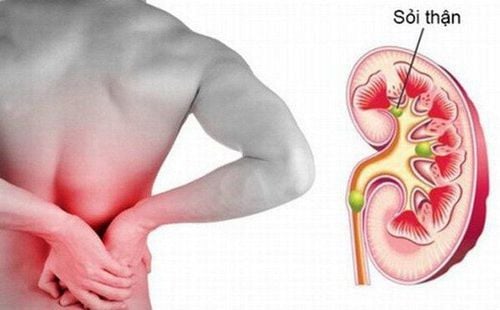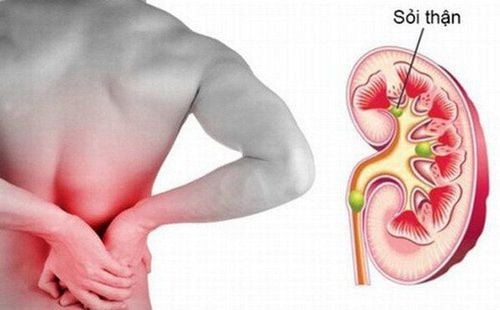This is an automatically translated article.
Article by Doctor Phan Phi Tuan - Head of General Surgery Department of Vinmec Phu Quoc International General Hospital.Common bile duct stones are a type of stone in the biliary tract, which can cause quite complicated complications such as biliary tract infection, acute pancreatitis and, if untreated, can progress to sepsis and potentially death. death.
1. Symptoms of common bile duct stones
Unlike common bile duct stones in countries in Europe and America, common bile duct stones in Vietnam are mostly complicated, mainly bile pigment stones, which can be caused by worms burrowing and dying in the bile ducts. stone nucleus.
The following are the symptoms of common bile duct stones:
1.1 Clinical symptoms Common bile duct stones obstruct the bile ducts and cause typical symptoms (charcot triad) such as: right upper quadrant pain, fever , jaundice .
Right lower quadrant pain: Right lower quadrant pain usually comes on suddenly, is intense and lasts sometimes 2-3 hours. Pain may radiate to the right shoulder or to the back. After eating, the pain is worse. Fever: Stones cause bile stasis, creating conditions for bacteria to grow, secreting endotoxins that cause inflammation, infection, and fever. Fever can occur at the same time or a few hours after the pain, sometimes as high as 39-40 degrees Celsius accompanied by chills, sweating, fatigue. Jaundice, yellow eyes: A sign of later appearance. Bile fluid is blocked and stagnant in the liver, bilirubin in the bile enters the blood, causing jaundice, yellowing of the eyes and mucous membranes.

Three symptoms of pain, fever, and jaundice that may appear and disappear after a while, and can recur many times are typical signs of common bile duct stones. In addition, other symptoms also appear such as: vomiting or nausea with pain, dark urine, discolored stools (when complete biliary obstruction) or skin rash due to bile salt toxicity (uncommon). .
When there are complications, the patient may present with different symptoms such as acute pancreatitis, septic shock.
1.2 Subclinical symptoms Laboratory results: WBCs, neutrophils, bilirubin, mainly direct bilirubin are increased, liver enzymes are often increased. When there are complications, the tests will change respectively such as amylase in acute pancreatitis, urea, creatinine increased in renal failure after septic shock...
Laboratory results: Ultrasound is a simple method, inexpensive, non-invasive, can determine the location and size of the stone, show the size of the gallbladder, dilatation of the biliary tree; and gives 95% accurate results.
Results of computed tomography: The results of computed tomography showed the gallbladder, biliary tract, liver and pancreas; They are especially valuable for detecting small lesions in the liver and pancreas.
Magnetic resonance imaging results: The results of resonance imaging support clearly identifying the types of ducts appearing in the tree of the biliary and pancreatic ducts. This approach positively supports both diagnosis and treatment.
2. Treatment of common bile duct stones
2.1 Non-surgical treatment Use drugs to dissolve gallstones and the treatment goes on for a long time. This method is often applied to patients who cannot have surgery. Mainly temporary medical treatment with antibiotics against Gram (-), smooth muscle relaxants. Besides, non-surgical treatment of common bile duct stones also includes transduodenal endoscopy, sphincter of Oddi removal of stones; percutaneous lithotripsy , endoscopic biliary lithotripsy ; extracorporeal lithotripsy.
2.2 Surgical treatment Treatment of common bile duct stones, the commonly used method for treatment is surgery to remove gallstones, creating bile-intestinal circulation. There are many ways to treat common bile duct stones such as: endoscopic retrograde cholangiopancreatography to remove common bile duct stones, open surgery or laparoscopic surgery.
Classical surgery (open surgery):
Open the common bile duct to remove the Kehr stone: This method was previously used routinely for surgical treatment of common bile duct stones. This is a method of surgical treatment, dissecting the abdomen and conducting manipulations on the biliary tract based on its pathological lesions.
Laparoscopic cholecystectomy:
This method helps patients avoid large incisions, reduce the risk of infection and blood loss, reduce pain, and shorten hospital stay. In laparoscopic surgery for common bile duct stones, the doctor makes 3-4 small incisions on the abdominal wall, through these small incisions, the doctor will put a camera into the abdominal cavity, as well as insert surgical instruments into the abdomen. for gravel. This method requires modern equipment and experienced surgeons to be able to perform it effectively and safely.

Endoscopic retrograde cholangiopancreatography (ERCP):
Endoscopic ERCP is a method used to cut the muscles in the common bile duct
ERCP and sphincterotomy is a surgical method to cut the muscles in the common bile duct to gravel to pass out or remove the stone.
General Surgery Department - Vinmec Phu Quoc International General Hospital with a team of experienced, positive and enthusiastic surgeons and anesthesiologists. The system of good equipment is a reliable address to serve patients to bring the best results.
Please dial HOTLINE for more information or register for an appointment HERE. Download MyVinmec app to make appointments faster and to manage your bookings easily.














